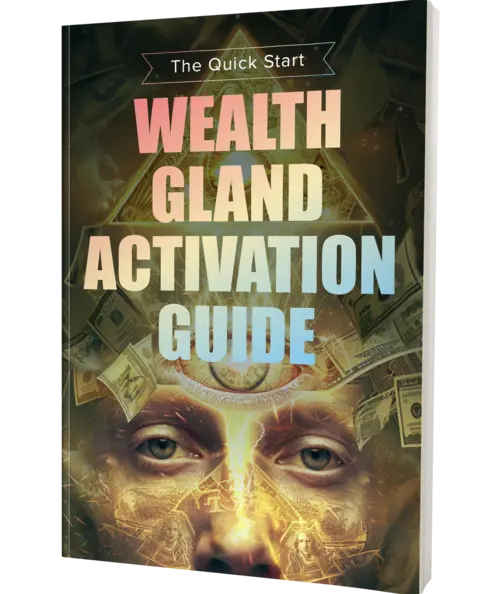So, you’re writing a play or devising a piece of theatre and you’re stuck with where to start or how to develop your story. In this video, I’m going to offer you 10 exercises and ideas to help get you writing. You can ask any playwright, writing a play is hard. But the more you do it, the better you’ll get at it. Before we start, here are three ‘actions’ to help you out.
Inspiration is the first. Make sure you draw on all these different things to inspire your process. Experimentation is two.
Try lots of different ideas out: different forms, different styles, different characters and different story ideas. The third is Determination.
Be resilient and keep chipping away at your play. If you have an urge to write, do some writing. If things aren’t working, take a break and then come back to it by having a fresh run up at it. Here are 10 activities that you can try out on your characters and your story. Interrupted Ritual: maybe you don’t know what scene to write or where to begin.
Well, one of the best ways to start, is by taking a human ritual and having it interrupted by something or someone. Think of all the stories from film, TV and theatre where a regular, ritualistic event is seemingly interrupted.
This might be a wedding, a meal, a funeral, a party, a journey, a meeting or a holiday. An interrupted ritual is a perfect foundation for drama. There are tonnes of things that we do as human beings that feel ritualistic and regular events that define our everyday lives.

Now think of all the interruptions that could affect that ritual. Is it from someone being there who shouldn’t be there? Or someone behaving in a way that disrupts it? Is it something happening unexpectedly, an external factor such as the weather or something environmental? Is it someone being late or not being there that creates a problem and drama?
Imagine a scenario or event for one or more of your characters, a ritual that should go smoothly, and make it very unsmooth. Flashback or Memory: This is one of the most popular storytelling devices that has become commonplace in all contemporary stories. It’s used in a huge number of films. And the reason it’s so popular is because it’s clear and often interesting. Rather than just having the action being in the here and now, the present, we can explore a moment from the past.
In theatre, we can easily create an important or pivotal memory in someone’s life. Maybe this is a monologue with a character describing a past event. Or maybe it’s a duologue or a group scene of something that’s happened before. Is this a first encounter between two key characters? Is this a scene from the youth of two old characters exploring how they were years ago?
Can you create a scene from the past that had a huge impact on the present? Writing a flashback or a memory is a great way of developing who a character is as well as exploring how their past affects their present. Even if you don’t use the whole scene or in fact any of it in the final play, by writing a character’s memory or flashback, you’re delving deeper into who that character is and discovering their backstory. Character Questionnaire: Create a questionnaire and answer it from the character’s perspective. The questions can be about their life, how they think and what their opinions are.
You can find various questionnaires like this online or in various books on acting or playwriting.
However, if you can’t source one, just write one yourself. If you’re collaborating with other actors, writers or theatre makers, get everyone to write five to ten questions, then compile them all together into one questionnaire. I suggest you use interesting, provocative questions. Not clever ones.
Just interesting ones. Some examples to get you started might be: Do you have a favourite parent? What’s the biggest lie you’ve ever told? Do you have any addictions? Who do you miss?
What are you proudest of? Not only will this questionnaire help develop your character, but you can take one of the answers and write a scene about that answer. Think about all the possible scenes that may stem from answers to these questions: … Job Interview / Firing: A great scene should contain high stakes and conflict – different people wanting different things. And a fail-safe scenario that everyone can identify and associate with is a job interview or getting fired from a job.
They’re a great starting point for a scenario to write because there is so much to play and have fun with. How nervous are the characters? How awkward are they?
How serious or important is the job role? What has someone done that means they’re getting fired? This is a classic high-stakes situation but what if there’s external factors affecting the smooth running of it. What if there’s someone fixing a computer or noisily cleaning windows just outside? Is there an extra person in the room making it awkward and odd?

Does something happen like a fire alarm go off or building works outside adding noise and disruption which compiles the tension in the room? All of the juicy bits of drama are already present in a scene like this; they’re part of the fabric and are built into it. So you can enjoy crafting a scene that’s playful, exciting or silly and focus on how the characters behave and deal with the situation, rather than worrying about coming up with a good scenario. Diary Entry / Therapy Session: Another strong scenario to kick off ideas with is to write a diary entry as a monologue from your character. Or by writing a scene between a character and a therapist.
These types of encounters have an intimacy, honesty and truth to them that allows the audience to access a character in great depth very succinctly. Writing a diary entry for a character can help you, the writer, get inside their head and flesh out who they are. Think how would the character write a diary. Would they swear? Would they draw doodles?
Would they be concise and abrupt? Or would they pour out long written rants about their day? And equally a scene between a character and a doctor or therapist allows the audience to discover lots about them at the same time as the other character.
The therapist almost represents the audience and will be asking the character questions that the audience would equally like to inquire about. This convention is used in many, many films and TV shows because it’s a great way to share exposition, back story or character info without having to shoehorn it in.
A doctor or therapist will be asking straight questions that a character can answer honestly in the confidence that it’s confidential. This is the perfect way of exposing your character to the audience. In Late Out Early: A popular writing trick is to start the scene as late as possible and end or get out of the scene as quickly as possible. What this means is don’t waste time and energy letting a scene warm up with characters entering, greeting one another and making small talk. This will only waste minutes of time and pages of unimportant dialogue.
So instead come in and start the scene as late as possible when something interesting is happening.
Consider what’s the most interesting line to kick off a scene with. Is it “Morning” or is it “What the hell are you doing?” Is it “David’s phone rings” or is it “Madam I’m going to have to ask you to stop shouting at me please.” A line like this will engage the audience and energise the scene from the off.
And equally try leaving the scene prematurely or as early as possible. Don’t let a scene dissipate, wind down or run out of steam.
Find a high point of energy, a moment of tension or an unresolved idea in the dialogue and make that the point to get out. This makes the writing feel unpredictable, irregular and interesting. It also excites and entices the audience to see what happens next.
It gives us a reason to watch the next scene. It charges the next scene with an energy, a question or a problem to explore further. If you’re wrapping up every scene with a neat little bow, all of the drama and tension disappear. This is a great editing exercise. Perhaps draft a scene and include all the slow warm-up, the main event and then the cool down to its conclusion.
Then go back and split it. So, we get in as late as we can and get out nice and quickly – like a ninja! Write Your Bad Ideas: This is a fantastic tip from the outstanding playwright, screenwriter and director Aaron Sorkin, who wrote and / or directed these films…: I discovered these clips online where he talks about a vital part of his process.
AARON SORKIN: “You know to get one good idea your mind has to flip through a rolodex of 50,000 bad ideas. I do nothing but stream through bad dialogue, bad scenes, bad everything until just I accidentally fall on – wait a second – that’s what it was I was looking for. I just want to hear your bad ideas. Very bad!
Love it! Very bad!” ALEX: So do just that. Think of your bad ideas, your boring, cheesy, cliche scenes and then write them out. By doing this and writing what the scene shouldn’t be, it will help you identify and work out what the scene should be.
 Look at the bad version and then think it’s not that, it’s this. This is a really fun exercise to do with other actors, writers or theatre makers. Write your bad scenes then share them together performed with the worst acting possible. Ultimately, if you want it to be bad then the pressure is off you to make it good. You can explore ideas and then they can point you in the right direction.
Look at the bad version and then think it’s not that, it’s this. This is a really fun exercise to do with other actors, writers or theatre makers. Write your bad scenes then share them together performed with the worst acting possible. Ultimately, if you want it to be bad then the pressure is off you to make it good. You can explore ideas and then they can point you in the right direction.
And who knows, maybe one of your bad ideas isn’t that bad at all. AARON SORKIN: “Uh, it was, by the way, it wasn’t that bad.” ALEX: And this idea could actually work in your play. Voice In My Head: Write a duologue with your character speaking to themself. Perhaps this is them going through their day with different interactions and events.
Or perhaps this is a moment frozen in time at a key decision point and they’re discussing the options with themselves. Again, this is a hugely popular and often comedic storytelling device in film, TV and theatre, where we see a character arguing with themselves. Even Shakespeare used it in The Merchant of Venice with this Launcelot Gobbo speech – where he’s speaking about the two voices in his head, advising him on whether he should leave his master or not. A more contemporary reference is Peep Show, where we continually hear the thoughts of Mark or Jeremy with often hilarious consequences.
Also have a look at part one of the play Parliament Square by James Fritz in which Cat interacts with voices in her head.
Humans do it all the time with thinking and speaking to themselves. So if you’re unsure of how to get started, give your character the opportunity to simply converse with themselves. This could be performed by one actor or with several performers representing different parts or opposing opinions of your character. Last Words: In life we don’t often finish our sentences. We might trail off or get interrupted.
And writing dialogue in a scene can reflect this. Many contemporary playwrights and plays utilise this idea. Look at what Zinnie Harris offers at the start of her play Meet Me At Dawn… And what Stacey Gregg offers at the start of her play Override with reference to brackets or parentheses… Some playwrights offer up the idea that words in brackets don’t need to be spoken. In the play drunk enough to say i love you by Caryl Churchill, the final words are removed, and sentences are completed by the other character.
So go through a scene that you’ve written and place the final few words or the last word in parentheses or brackets.
Then decide if you want to keep them in but make them unspoken, which several contemporary playwrights do. Or if you take these words in brackets out, does it make the scene sharper and more interesting? By doing this your text will feel more realistic and it’s forcing the audience to engage their mind and imagination by completing the thought themselves. Humans are great at guessing what the last word will ….. So try taking out the final word of a ….. It will make it feel fresh, exciting, realistic and ….. Digital Dialogue: Write a scene that’s taking place digitally via Twitter, Facebook or Zoom.
The perfect inspiration for this is the brilliant play ‘seven methods of killing kylie Jenner’ by Jasmine Lee-Jones. Some scenes in this play consist entirely of tweets and memes and take place in the twitter sphere.
And if you want to check out the first example of a scene like this in theatre, look at scene three in Patrick Marber’s play ‘Closer’. There are also several scenes in Lucy Prebble’s ‘The Sugar Syndrome’ which take place over the internet. If the scene, conversation or interaction is happening on Twitter, you could include hashtags, twitter handles and gifs.
Think about the formatting and layout. Think about abbreviations and slang. You can write a scene with all of this in it. Perhaps you have a scene written already. Try translating it to be a scene that’s played out digitally.
You can have all sorts of fun when performing this. Perhaps using video design and sound design or microphones to amplify voices. You can use movement or create tableau to make gifs on stage. And there we go, 10 playwriting activities to try out on your writing.
Good luck.
Thanks for watching. If this video helped you, please give it a like. Do check out these other videos and subscribe. And if you want to support what I do and the channel, you can click on the link in the video description. All the best.
https://olspsystem.com/join/1592425/b1
Your Commission Level: Mega Link
Discover more from Marketing Revolution
Subscribe to get the latest posts sent to your email.























